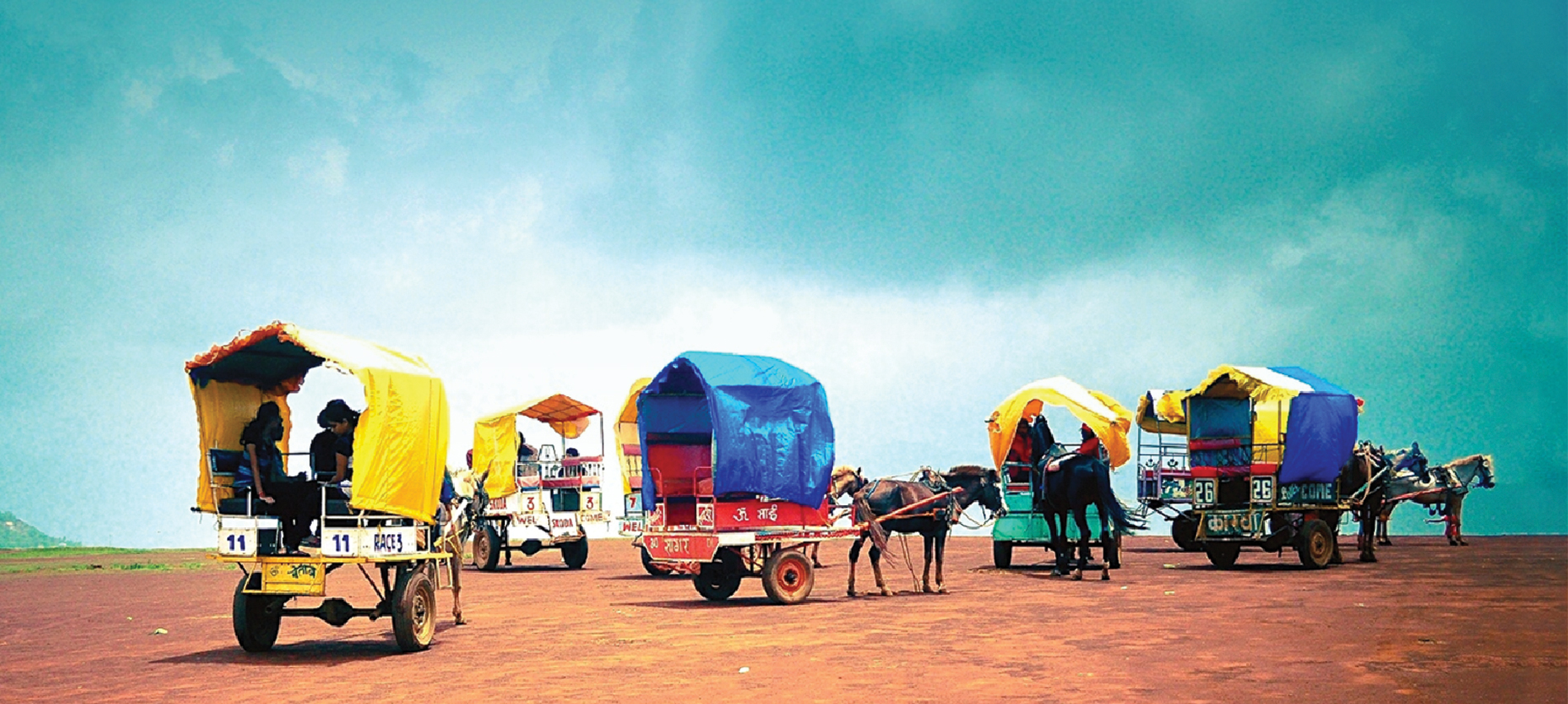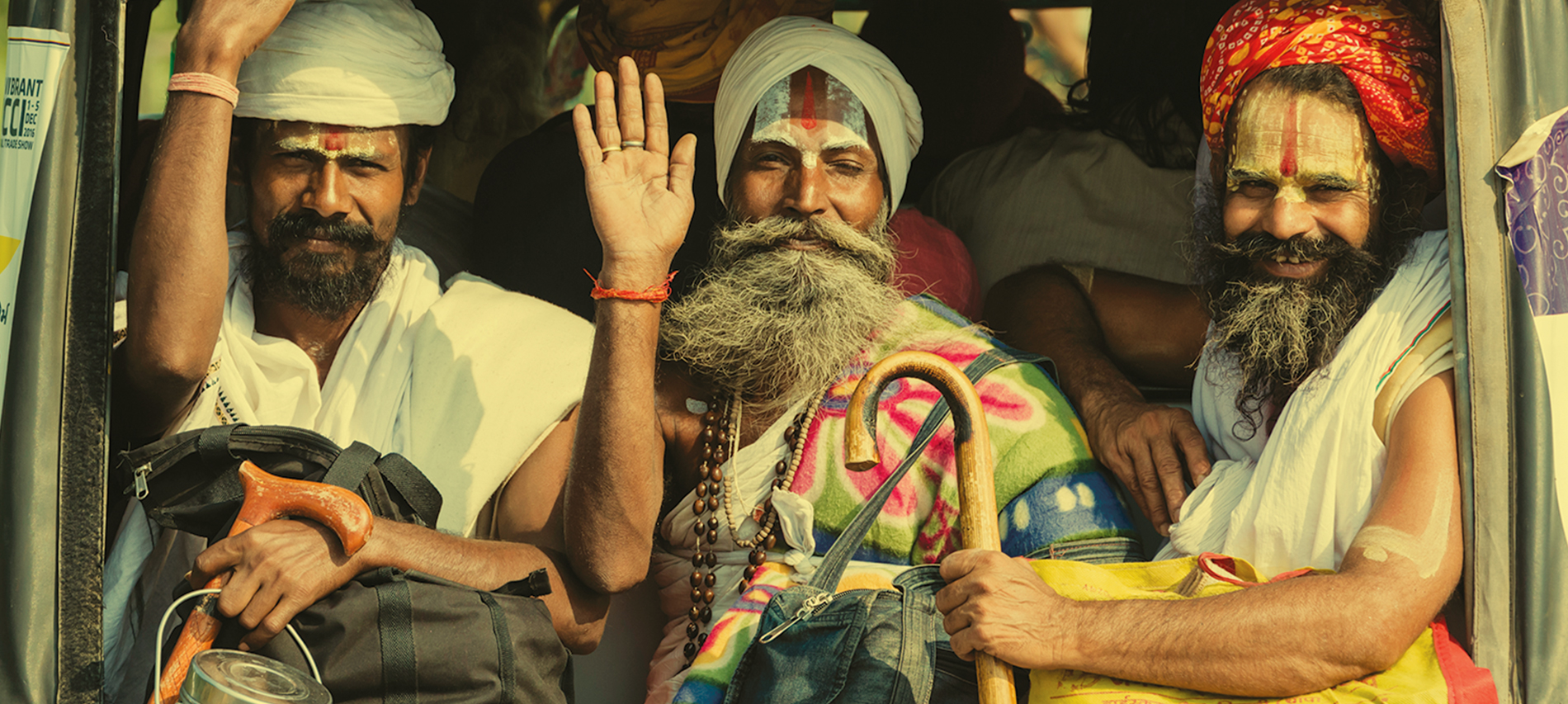Shilpa Shetty Kundra is a renowned film and TV actor, businesswoman, author of The Great Indian Diet, entrepreneur and health enthusiast. She has always been a trendsetter, whether it be fashion or ideas. In her latest book, The Diary of a Domestic Diva, the actor and entrepreneur brings you fifty of her most special recipes-some of which feature in her popular Sunday Binge videos on Instagram.
Here’s an excerpt from the introduction to this book by Sanjeev Kapoor.
————-
What I like most about Shilpa’s approach to food is that it’s very honest. She belies the notion many of us have about stars: that they live by strict diets and don’t eat as they please. Shilpa, as you will discover through this book, is a dedicated foodie and loves to eat. I have known her for a long time now and I can tell you that she certainly knows when to stop eating too, one of the key factors in maintaining a healthy body weight.
The Diary of a Domestic Diva is straight from her kitchen and offers a mix of healthy recipes, favourite recipes, famous recipes with a twist and guilt-free desserts. The idea behind the book is very heartening. It features recipes that do not take much of your time and leave you free to do other things. Through this book, she touches upon a beautiful point: Women need not be tied to the kitchen stove all day. Give a woman nutritious and fast-to-cook recipes and she will have the time to step out to do what she pleases. It’s a cookbook with a message: Women ought to have some ‘me’ time. In my conversations with her, she has often mentioned the way, back in the day, her mother (a brilliant cook) would cook with the paucity of time as she was a working woman. I know it is all this that has led her to put together this book for the working woman. Being a family person, every aspect of her life draws from her experiences with people close to her. Her father’s love for food and yet his fitness is another inspiration that has worked so well for her. The recipes mentioned here have been tried out by her and I can vouch for their deliciousness. The fact that I drop everything when there’s an invite to her lovely ome for a meal is proof! The twists she adds to traditional recipes are delightful to say the least. The Diary of a Domestic Diva is about indulging your love for good food. And when such a message comes from one of the fittest people in town, you do sit up and take notice. Shilpa maintains that good food makes us happy and we shouldn’t feel guilty about something that makes us happy, and over the years this is something I have come to believe too.
With this sure-to-be-a-bestseller cookbook, Shilpa also enters the space of celebrity cooks and it delights the chef in me to see the world get so interested in food. It is indeed one more brownie point for the food industry.
—————

Tag: book nibbles
Catalyst by Chandramouli Venkatesan – An Excerpt
Chandramouli Venkatesan is a corporate veteran with over twenty-six years of experience in the industry. He has worked with Asian Paints, Cadbury/Mondelez, Mirc Electronics/Onida and Pidilite. He has served in various senior capacities, including as CEO and managing director. He has conducted numerous speaking sessions, which have benefited over 1000 people, and mentored and guided many others to be successful in their careers. His book, Catalyst, will arm you with the right tools to succeed at your workplace and get the most out of every moment, every day.
Let’s read an excerpt from this life-transforming book.
————
In all my experiences and travels across the world, the one thing that stands out is the hunger for success that most people have and, in particular, Indians have. Often that hunger for success can be simplified by most people as success and growth in careers. That success in life is equal to success in careers is often the operating assumption of most people. In the latter portion of the book I do try to give a more holistic dimension to success in life to include values, character and other related aspects. However, in the first half of the book I focus primarily on giving what people want—the keys to success in careers.
I have a simple equation for career growth
Career growth = Real Individual growth +_ Environmental aspects
What this equation tries to say is that career growth is driven by two factors—real individual growth and environmental aspects. Real Individual growth is the growth we experience in the duration of our careers; how much each one of us grow our knowledge, our skills, our judgement, our influence, our communication etc. The second factor is Environmental aspects, which covers things like buoyancy of the job market, industry related factors, relative availability of talent in your skill areas etc.
Let me first cover the impact of environmental aspects on career growth. Our careers are typically 40 years long, we start in our 20s and wind up in our 60s. During these 40 years we will have both environmental tailwinds and headwinds to our careers. An example of a tailwind would be the times in your careers where the job market is hyper hot for the skills you have, there is a shortage of the skills you bring and people tend to get jobs and salaries bigger than what they deserve, sometimes going all the way to bubbles. Another example of a tailwind is when your boss quits the company, you are not yet fully ready to take that role, but the company decides it would rather go with an insider and hence gives the job to you even when you are not yet fully ready. Such tailwinds are bound to support most of us at times in our careers.
Similarly, we have all experienced headwinds in our careers. There are times when the economy is dragging, the job market is weak and there are very few opportunities for people to grow. Another example of a headwind is when you have been steadily getting ready for a big job, equipping yourself with the right experiences, apprenticing under the right leaders and preparing yourself for the opportunity and when the opportunity comes the company in its wisdom decides it wants to drive change, wants new thinking and a change in strategy and hence prefers to hire an outsider into the role as opposed to promoting an insider. Nothing you did wrong, but the dice did not roll your way.
My experience is that in a 40-year career, the headwinds and the tailwinds balance each other out. You will have some headwinds in your career as well as some tailwinds. You have to be a very lucky person for the tailwinds over 40 years to be greater than the headwinds and similarly you have to be very unlucky for the headwinds over 40 years to be greater than the tailwinds. For most people the two does balance out. Hence going back to our career growth equation, it means that the environmental aspects will not be deciding factor in driving career growth.
The catalyst of career growth tends to be real Individual growth. Simply said, in your career you will experience as much career growth as you are able to grow yourself as an individual and as a professional, what I call real individual growth. If you manage to grow your skills, your knowledge, your decision making, your judgement, your influence on others, your communication etc. then you will experience career growth. Career growth is directly proportional to and is a function of the real individual growth. You experience career growth if you manage to grow yourself during your career, if you stop pushing yourself at any stage the career growth also comes to a screeching halt.
Hence the equation of career growth can be simplified to
Career growth = Real Individual growth
One way I like to state this is the expression, “you get what you deserve”. Far too often in our careers we focus on the getting part of it, we focus on getting the promotion, getting the new job and getting career growth. We do not focus on deserving more, increasing our capabilities, our skills etc. In a career, you get what you deserve. It is useful to remember what is in our hands—focusing on deserving more and driving our real individual growth.

‘Taslima and Bhimsen steal the show’: Scenes from an award night
Taslima Nasrin is an eminent writer and secular humanist who has been subjected to forced banishment and multiple fatwas. She has been living in exile since 1994. For her powerful writing on women’s rights and uncompromising criticism of religious fundamentalism, the Bengali original of this book, Split: A Life, was banned by the Left Front in West Bengal as well as the Government of Bangladesh. Bold and evocative, Split: A Life opens a window to the experiences and works of one of the bravest writers of our times.
Here’s an excerpt from this powerful book.
————

I asked for forgiveness because I had dared to accept such an exalted award despite being such an insignificant entity, for having shown the audacity even though I was utterly undeserving. Who knew if anyone forgave me in the end! After the event many writers and artists came up to congratulate me and I spoke to people I had never imagined I would have the opportunity to speak to. The day after, the news of the award ceremony was published on the front page of Anandabazar Patrika along with the headline ‘Taslima and Bhimsen steal the show’. Celebrations were being held all around me. Soumitra Mitra was very happy with how things had turned out and he was taking me to various places to meet various people. He surprised me with a visit to Rabindrasangeet exponent Kanika Bandyopadhyay. I was an ardent admirer of Kanika and standing in front of her was like a wave of euphoria had swept over my entire world. Ashesh and Mona, my companions during the Basanta Utsab trip, came to see me and took a bunch of photographs. I was suddenly an important person who no longer had to walk hunched along the corridors of Anandabazar and everyone knew who I was. Sagarmoy Ghosh offered me a chance to write a serialized novel for Desh. Floored by the offer I confessed I did not know how to write a novel. He smiled but did not rescind his offer. Nikhil Sarkar invited me to his Salt Lake residence and gave me a bunch of letters with which to go and meet a number of well-known people. Dutifully, the small writer with the big award took the letters with her and hesitantly went to pay a visit to the big guns. Mahasweta Devi, Meera Mukhopadhyay and many others—stars one was meant to show respect to when reaching for the sky. Whether I was even near the sky or I was where I had always been, I could scarcely tell for sure; I stood in front of the celebrities with all my insecurities and remonstrations intact. There was a trend in Calcutta to touch the feet of senior writers and artists to pay them one’s respects. Unused to the custom, I could not help but stand stiffly in front of most people I met. I had never managed to grasp the Bengali Muslim version of the same ritual either, the kadambushi. Though my heart was full of respect, I refrained from touching people’s feet and this must have irked many a senior, made them think of me as an upstart. But there was hardly anything I could do about it. If I was suddenly asked to till the field was I not supposed to stand there dumbstruck? It was impossible for me to abruptly start doing something I had never done before.
Despite not being one for formalities, I loved giving the small gifts I had brought from Bangladesh to my friends and well-wishers in Calcutta. Aveek Sarkar had handed the Ananda Puraskar to me and it was only right that I gift him a small token in return. So I took the multi-coloured jamdani sari I had worn for the award function, got its ornate border cut and had it framed in the best golden frame from a renowned framing shop on Park Street. When I reached the Anandabazar offices with my gift, Nikhil Sarkar was astounded by my daring. What I had failed to grasp was that for an art connoisseur and a man of such refined tastes as Aveek Sarkar, the limits of what he preferred among Indian art objects was probably defined by the Maqbool Fida Husain I saw adorning the walls. Otherwise, everything else was surely works by famous Western artists and painters. A jamdani sari border, no matter how beautiful, was not something that could possibly hope to be displayed in his room. I could not help but think to myself that the women behind such exquisite work were no less great artists, but the tasteful and the rich hardly considered them worthy of their attention. It was fortuitous that I had not turned up at Aveek Sarkar’s office directly with the framed piece of jamdani. Nikhil Sarkar advised that if I was bent on giving the gift to someone I should give it to Aveek Sarkar’s wife. Swallowing my discomfiture I did exactly that and managed to save Sarkar, the giant of Anandabazar, from any further embarrassment. A leading bureaucrat of the Bangladeshi consulate invited me and some authors to his place, primarily in my honour. As soon as I arrived the poets and writers of Calcutta surrounded me and inundated me with questions. So many questions of so many kinds— renaissance, revolution, feminism, backlash, modernism, postmodernism, my literary ideology, political beliefs, class struggle and so on. They waited for me to reply with startling answers while all I could do was stare at them in wide-eyed wonder. The questions appeared incomprehensible to me and seeing my bafflement they too began glancing at each other in surprise. Embarrassed, I wanted to curl up like a snail and disappear from the star-studded gathering, simply vanish without a trace. I did not want to answer any questions because I had no answers to give.
Coffee Can Investing The Low Risk Road to Stupendous Wealth – An Excerpt
Most people invest in the usual assets: real estate, gold, mutual funds, fixed deposits and stock markets. It’s always the same four or five instruments. All they end up making is a measly 8 to 12 per cent per annum. What if there was another way? In Coffee Can Investing, Saurabh will show you how to go about low-risk investments that generate great returns.
Here’s an excerpt from this book.
———–
“The ancient Romans were used to being defeated. Like the rulers of history’s great empires, they could lose battle after battle but still win the war. An empire that cannot sustain a blow and remain standing is not really an empire.” – Yuval Noah Harari, Sapiens: A Brief History of Humankind 18 (2011)
Many historians take the view that the “greatness” of a kingdom or an empire should be measured by its longevity. How long did the empire sustain? How durable was the empire? By this measure the first great empire was arguably the Persian Empire. Founded around 550 BC, it lasted for around 200 years until Alexander the Great brought it to an end in 330 BC by defeating King Darius III. However, if longevity is the measure of a great empire, then the Roman Empire is by some distance the greatest empire that the world has ever seen. Whilst the first Roman republic, headquartered in Rome, lasted from 100 BC to 400 AD, the imperial successor to the Republic lasted for a staggering 1400 years before falling to the Ottoman Turks in 1453. So ubiquitous is the influence of this empire, the language in which we are writing this book, the legal system which underpins the contract between the publisher and the authors of this book, the mathematical concept of compounding which underpins much of this book, all of them come more or less directly from the Roman Empire!
When it comes to investing in stock markets, greatness is defined as ‘the ability of a company to grow whilst sustaining its moats over long periods of time’. This then enables such great companies to sustain superior financial performance over several decades. The Coffee Can philosophy of investing is built using the twin filters to identify great companies that have the DNA to sustain their competitive advantages over 10-20 years (or longer). This is because ‘greatness’, which the coffee can portfolio seeks, is not temporary and it is surely not a short-term phenomenon. Greatness does not change from one quarterly result to another. In fact, great companies can endure difficult economic conditions.
Their growth is not beholden to domestic or global growth – they thrive in economic down cycles as well. Great companies do not get disrupted by evolution in their customers’ preferences or competitors or operational aspects of their business. Their management teams have strategies that deliver results better than their competition can. These great companies effectively separate themselves from competition using these strategies. Over time, they learn from their mistakes and increase the distance between themselves and their competition. Often, such companies appear conservative. However, they do not confuse conservatism with complacency – these companies simply bide their time for making the right moves. These traits are common among great companies and rarely found outside great companies.
——————-

The Diary of a Domestic Diva by Shilpa Shetty Kundra – Recipe Excerpt
Shilpa Shetty Kundra is a renowned film and TV actor, businesswoman, author of The Great Indian Diet, entrepreneur and health enthusiast. With Shilpa Shetty’s quick and hassle-free methods, The Diary of a Domestic Diva makes cooking good food easy. These favourites of the Shetty-Kundra household have been created to give you variety, taste and the occasional food coma.
Let’s read this recipe which will give us a peek into the world of the Domestic Diva!
————
Shilpa’s Treasure Pulao
This is a simple pulao recipe that I whip up when I am struggling to decide what to cook. It pairs well with cucumber raita, dal, chicken or any other curry. It’s a permanent fixture at all occasions, arties or pujas at my house and is always appreciated by guests.
Serves: 3
Nutritional value:
768 kcal (Carbs: 53 g,
Protein: 4 g, Fats: 60 g )
3 tbsp vegetable oil
1 big onion, julienned
1 bay leaf
3 star anise
2 black cardamoms
5 cloves
1 tsp coriander powder
1 tsp cumin powder
1 tbsp garam masala
Juice of ½ lemon
1 tsp salt
½ tsp cayenne pepper
½ tsp black pepper powder
½ cup fresh corn
1 tbsp ghee
1 cup basmati rice, washed and soaked for 15minutes
2 cups water
1 veg or chicken stock cube, soaked in 4 tbsp warm water
- Heat the vegetable oil in a wok on medium heat and fry the onions till they are golden brown. Next, add the bay leaf, star anise, black cardamoms and cloves. Mix well.
- Add the powdered spices and mix for a couple of minutes till they are fragrant.
- Add the corn, making sure it is partly cooked before you add the rice. You can also steam it separately if you want to save time.
- Mix in the ghee and the rice, along with water, vegetable stock and lemon juice. Cook for 15 minutes in a pressure cooker. If you want to cook it without pressure, then add 1¾ cup water. Season well and serve hot after removing the whole spices.
Variation: Check if the vegetable cubes are low in salt. Normally, stock cubes are pre-salted, so I hunt for the low-sodium ones. You can substitute corn with green peas or chicken. Nonvegetarians can substitute the vegetable stock cubes with chicken stock cubes.
——

India in Slow Motion by Mark Tully – An Excerpt
Mark Tully worked for the BBC in South Asia for 25 years and now works as a journalist in New Delhi. His books include No Full Stops In India, The Heart of India and Lives of Jesus. In India in Slow Motion, Mark Tully covers subjects as diverse as Hindu extremism, bonded child labour, Sufi mysticism, the crisis in agriculture, the persistence of political corruption and the problem of Kashmir.
Let’s read an excerpt from this book.
———
On the last Sunday we met another priest who had not found change easy. When we were sitting in a pew waiting for mass to start in Old Goa’s Se Cathedral, a small, elderly but remarkably spry priest came up to us wearing not the usual white cassock but an old fashioned, tight-fitting black one with a traditional high dog-collar. He asked whether I was a Portuguese speaker and when I told him I didn’t know a word of the language he said, ‘I usually ask foreigners that because I love speaking Portuguese but I don’t get much chance nowadays.’
I asked why the exterior of his cathedral was now yellow instead of the traditional Goan white and this provoked a diatribe against the Archaeological Survey of India which had taken over responsibility from the church for the monuments of Old Goa. ‘We can’t do anything to our own cathedral now,’ he fumed, hopping from one foot to the other in his anger. ‘We even have to get permission to put up a new collection box, and what do they do to preserve the church? Nothing.’ As evidence he took me to the west end and showed me piles of rubble where the plaster was peeling from the pillars.
I had noticed that his cassock had purple piping and purple buttons so I asked, ‘Does the purple mean you are a monsignor?’
‘No. But I am Father Adolpho Joviano Castro Viegas, a canon of the cathedral and the parish priest and that is just as senior.’
Having been put straight about that, I went on to ask, ‘In the cathedral, do you keep up the old traditions of worship?’
‘Of course I try to, but what can we do? We don’t have money to pay for the choirs and all that you need for proper ritual, and the bishop doesn’t care either. The Portuguese bishop used to come here regularly with full pomp and devotion. The present one only comes about four times a year. I love the full ritual and singing, it lifts your heart.’
The peppery priest then left me to robe for the chapter mass. The vast cathedral was far from full when Father Adolpho and six other equally elderly canons entered through the south aisle. Robed in splendid green copes they walked in a solemn procession, accompanied by just one server, to the altar at the top of the chancel steps. Six of the canons including Adolpho took their seats in high backed chairs behind the altar and one stood at the altar to celebrate the mass with dignity and solemnity. He was accompanied by a small choir in the organ loft.
Looking at the magnificent gilded reredos crowned by the figure of Christ on the cross just below the white-barrelled ceiling of the sanctuary, I couldn’t help but think of the Portuguese who had built this monument to impress Goans with the majesty of a God who lived on high. I knew that the church had to change, to bring God down to earth, if it was to survive in independent India, but I also acknowledged that I came from the old tradition, the tradition Father Adolpho was preserving. I found it easier to worship God in majesty, rather than God the social worker who battles for the poor, or God the personal pal of the charismatics.
——

In the Name of God by Ravi Subramanian – An Excerpt
Ravi Subramanian, an alumnus of IIM Bangalore, has spent two decades working his way up the ladder of power in the amazingly exciting and adrenaline-pumping world of global banks in India. Four of Ravi’s eight bestselling titles have been award winners. His latest thriller, In the Name of God, revolves around the Anantha Padmanabha Swamy Temple in Thiruvananthapuram that safeguards within its sacrosanct walls centuries of customs and rituals, unimaginable wealth and an unwavering calm. Until a dead body turns up in its holy pond. . . and then another.
Let’s read an excerpt from this gripping novel.
.
—————-
Nirav Choksi, a name the who’s who of Mumbai had on their speed dial, designed and manufactured customized jewellery for the rich and famous all over the world. He was often referred to as the Indian Joel Arthur Rosenthal, one of the world’s most exclusive jewellers whose high-flying clientele included Elizabeth Taylor, Elle Macpherson, Kim Kardashian, Michelle Obama and even the Princess of Jordan. Nirav Choksi’s client list boasted the marquee names on the social circuit—politicians, wealthy Indian businessmen, film stars. Choksi wielded a fair bit of clout on the jewellery trade in the country. A man with both contacts and influence, he was an extremely sought-after guy in the political circuit for skills which went beyond jewellery design.
Like Rosenthal, he too made fifty to sixty pieces of jewellery a year. Connoisseurs recognized an NC piece the moment they saw it. From traditional to contemporary, he designed them all, never repeating a design. A man with a huge ego, Nirav crafted his own designs and would get very upset if a client tried to dictate to him. He was once overheard saying that he preferred international clients to Indians, not because they paid more, but because in India every woman thought she was the best designer in the world. There were times when he had refused to sell a piece of jewellery because he felt the ornament would not look good on the client—such was his pride in his craft. Every stone is a canvas and every item of jewellery is a piece of art, he would say. Advertisements and self-promotion were not Nirav’s style. According to him, ‘word of mouth’ was what helped him get and retain clients. Even his office in Zaveri Bazaar was a thousand square-foot pigeonhole in the basement of Pancharathna Complex.
Zaveri Bazaar was the nerve centre of the jewellery trade not only in Mumbai, but the whole of India. Roughly sixty per cent of India’s gold trade passed through the narrow overcrowded lanes of the bazaar. The shabby buildings lining the sides of the main road held crores of rupees worth of gold, diamonds and jewellery, all stored in lockers built into the walls of the small stores, said to be strong enough to withstand any kind of robbery attempt, earthquake or bomb blast. The Government of India’s attempts to move the diamond and jewellery trade to a snazzy new building in Bandra Kurla Complex, an upmarket suburb in Mumbai, had been met with resistance. Many jewellers, led by Nirav Choksi, were Zaveri Bazaar loyalists and unwilling to move to the government-sponsored yet privately owned BKC Diamond Bourse.
Nirav had one more office in the neighbourhood. Apart from the basement office in Pancharathna Complex, he also had a small workshop a few buildings away where his trusted and most skilled workers crafted the pieces that he so painstakingly designed.
That day, he had just stepped into his basement office when his phone rang.
————

If It’s Monday It Must Be Madurai by Srinath Perur – An Excerpt
Srinath Perur’s writings on travel, science and books have appeared in various national magazines. He lives in Banglore. As much about people as places, If It’s Monday It Must Be Madurai: A Conducted Tour of India is also a reflection on the nature of popular travel today marked by the packaging of experiences, the formation of tourist economies and compulsive picture-taking.
Let’s read an excerpt from this book.
—————–
This is my first time on a conducted tour: eight days in a Tamil Nadu Tourism bus, moving south from Chennai in short hops along the coast to Kanyakumari, and back via Madurai and Trichy. Our tour guide is the industrious Mr N, who will prove ever-willing to provide unscheduled stops at places of religious significance.
I am on assignment for Outlook Traveller magazine along with photographer Jyothy Karat. She and I are by far the youngest of the twenty-one tourists on board. The rest are between fifty and sixty-five years old, many just-retired with ‘settled’ children. The bulk of our group is Telugu speaking—a few couples plus eight or ten members from a single family. There is an immediate division along linguistic lines with all the Telugu speakers forming a solid group. The outliers are Jyothy and I, a Bengali couple and an NRI woman who looks remarkably like Johnny Lever.
The men on the tour have worked in banks and public sector undertakings, one has been a headmaster. The women are mostly housewives. All this is revealed in a ‘self-introduction’ session organized by Mr N after we leave Chennai. We take turns to lurch up to the mike at the front of the coach to state—Mr N is always exact in his directions—‘name, place, what you are doing, and designation’. The men, to a man, speak for their wives. The Bengali gent delineates his identity in three crisp sentences: ‘I am from Calcutta. I am a Bengali. I am a retired government servant.’ Ms Lever says, ‘I’ve left my husband and come to tour India.’ The other women burst into applause, as eloquent a self-introduction as any. They also proceed to ignore Ms Lever for the rest of the tour.
Mr N has been a tour guide for close to twenty years, and he knows his flock eerily well. He’s brought along a stool that acts as a much-needed additional step while boarding the bus. He declares ad hoc restroom breaks that always have grateful takers. If he announces a medical shop, there are always people who’ve run out of their pills. It had struck me as odd that he specifically asked us to mention designation while introducing ourselves, but a day into the tour I’m beginning to see how much it matters. The headmaster is not simply a teacher, the Regional Manager did not just work in a bank. The official persona still lingers about the men, and travel takes the aspect of an inspection tour. ‘How was the food?’ one man asks me after lunch. I tell him I enjoyed it; what did he think of it? He grimaces and shakes his head: ‘Not up to the mark.’ Every aspect of the tour is up for comparison and assessment over the next week: food, the coach, rooms, the driving, sunsets, temples, even the gods.
In the bus I sit at a window seat near the back. The Regional Manager takes the aisle seat in front of me, reclines his backrest, and asks through the gap, ‘What do you write about?’ I tell him. ‘Economics is more interesting,’ he says, and embarks on an epic monologue. I learn, among other things, that the national savings rate is down from 23 per cent to 21 per cent and that the high point of RM’s professional life involved seeing the Allahabad GM pulled up for dozing off in a training session. I make strategic seating choices for the rest of the trip, but am cornered in various other places. One morning after breakfast RM comes up to me and points at Jyothy, who is taking pictures in the distance. ‘I have thought of a poetic name for your friend,’ he says. ‘She is Lens Lass.’
Lens Lass is less than half the age of the next youngest person on the tour (myself excepted), and realizes right on Day 1 that this tour may not have much to offer by way of fun. On the first evening of the tour we go boating in the mangroves of Pitchavaram, down the coast from Pondy. Seven of us in one rowboat, the ride is proving sedate, even somnolent, when the headmaster cries out to the boatman, ‘Slow! Slow!’ LL confesses she is feeling trapped. It doesn’t help that Ms Lever is developing a motherly crush on her, and even attempts to create a rift between us. LL is advised to be wary of me: ‘He appears to be a good person, but in this world you never know.’
————-

The Black Economy in India by Arun Kumar – An Excerpt
Arun Kumar taught economics at the Centre for Economic Studies and Planning, Jawaharlal Nehru University, Delhi, till 2015. He has a master’s degree in physics from Delhi University and Princeton University, USA, and a doctorate in economics from JNU. A ground-breaking book, The Black Economy in India in India shows how demonetization is not the way to end the black economy, since what India needs is to empower citizens and make leaders accountable.
Here’s an excerpt from the Prologue.
—————
The black economy is once again in the news because of the announcement of demonetization of the large-denomination currency notes. It is not that this is the first step that the present government has taken to tackle the black economy. It started its journey by forming a special investigation team (SIT) under a Supreme Court order in 2014. It has got the approval for many bills, for example, on Benami Property, Black Money held abroad and Income Declaration Scheme. But none of them had the same dramatic impact on the economy since they were not comparable in order of magnitude that demonetization is.
The present move will not be able to tackle the black economy but has the potential to devastate the economy. The impact on the poor, the farmers, workers and producers in the unorganized sectors has already been severe. Thus, it is impacting those who never generated black incomes or held much of the high denomination currency notes. According to reports, much of the high-denomination notes issued by the RBI are coming back into the banks. The implication is that those who held substantial black cash have managed to exchange their old notes for new ones. Thus, the culprits who were supposed to be punished by the demonetization have escaped while the innocent have been trapped into standing in queues or by unemployment.
The prime minister promised normalization in fifty days but that cannot happen since so much currency cannot be printed in such a short time. Not only will the currency shortage continue due to insufficient printing capacity but those with black money are first replenishing their coffers causing a shortage of cash available to the public. Further, hoarding is going on. Thus, the economy would suffer for much longer and irreversibilities have already set in, pushing the economy towards a recession.
All this happening in the context of the black economy has again brought this topic to the centre stage. Public curiosity/ awareness of the issue has suddenly increased by leaps and bounds. It is in this context that this book with a new prologue is being issued at this juncture. The prologue discusses the different remedies to tackle the black economy that have been attempted by the present government. It must also be said that the theoretical framework of the book remains as valid today as it did in 1999. In fact, there is a section on demonetization in the book which had argued against taking such a step for precisely the reasons that are playing out today.
—————

Selected Speeches and Writings of Vallabhbhai Patel; An Excerpt
Vallabhbhai Patel, popularly known as Sardar Patel, was one of India’s towering leaders, whose contribution to the Indian Republic is immense. This book, Selected Speeches and Writings of Vallabhbhai Patel, showcases this great man’s commitment to develop this nation – his staunch belief in communal harmony, benefits of freedom for all citizens and in peace and cooperation between different regions.
Here’s an excerpt from the chapter, Build a Strong India Speech at Island Grounds.
————-
YOU WANT ME TO TALK TO YOU IN ENGLISH. I shall obey your command; but take it from me that it will not be long before you yourselves will have to speak in our national language. If you do not do that, you will drag the country backward. We have to exert our maximum effort to go forward. Unless you do that, I am afraid, you will suffer.
After a prolonged struggle the country has secured freedom, but it is not freedom of the kind that we wanted. It is not freedom of the kind that the deliverer of the country expected, and to our shame we have to confess that by our folly we have lost him. Now after his going we must do penance and try our best to deserve the freedom that he obtained for us.
Free India is only a child of a year and a half. It has yet to learn to walk; it has to grow, to be strong, and its future depends upon how we build today. Therefore, we have to nurse it carefully; we have to feed, clothe and strengthen it properly. It is our great good fortune that we have here a rare opportunity to build our own country in our own fashion. History will record what we are doing today.
The first requisite for building a strong, free India is unity and peace. If there is no unity in the country, it is bound to go down. Therefore, we must first of all adjust our differences and behave in such a manner that there is complete harmony and peace in the country. You cannot expect the Government continuously to maintain peace by force. It would be an evil day when in this country the Government has to use repressive measures permanently. Today we are passing through a period of crisis and our young men have, in their impatience, not realised that the freedom which has been obtained with great difficulty is likely to be lost or likely to give no benefit, no advantage, if we do not appreciate that our present duty is to unite and consolidate our freedom.
We lost our leader because we forgot the very first lesson. If we do not realise even after his going that in unity lies our strength, then greater misfortune will befall us.
For unity, we must forget differences of caste and creed and remember that we are all Indians, and all equal. There can be no distinction between man and man in a free country. All must have equal opportunities, equal rights and equal responsibilities. This is difficult for achievement in practice, but we must continuously strive towards that end.
There is one other thing that we have to do to maintain peace and order in this country. For a few years at least, till we are able to stand on our own legs, we must forget that we can every now and then threaten the Government. We cannot function if the Government is to be challenged day after day by groups of people who want to have their own way. What they want may be, according to their own honest thinking, very good; but Gandhiji has put before us the ideal of obtaining what we want by peaceful methods and through truth and non-violence. If people begin to threaten and challenge Government’s authority and try to overthrow it to gain their objectives by force, the latter would not be able to do anything constructive. Forces are existing in this country which would create chaos and disorder, which would weaken the country instead of strengthening it.
We in the Government have been dealing with the R.S.S. movement. They want that Hindu Rajya or Hindu culture should be imposed by force. No Government can tolerate this. There are almost as many Muslims in this country as in the part that has been partitioned away. We are not going to drive them away. It would be an evil day if we started that game, in spite of partition and whatever happens. We must understand that they are going to stay here and it is our obligation and our responsibility to make them feel that this is their country. It is, of course, their responsibility, on the other hand, to discharge their duties as citizens of this country.
We must all understand that partition is behind us. It has to come to stay. I honestly believe that it is good for both the new nations to be rid of a perpetual source of trouble and quarrels. In two hundred years of slavery, the administration created a situation in which we began to drift away from each other. It is good that we have agreed to partition in spite of all its evils; I have never repented my agreeing to partition. From the experience of one year of joint administration when we have not agreed to partition, I know we would have erred grievously and repented if we had not agreed. It would have resulted in a partition not into two countries but into several bits. Therefore, whatever some people may say, I am convinced and I remain convinced that our having agreed to partition has been for the good of the country.


















